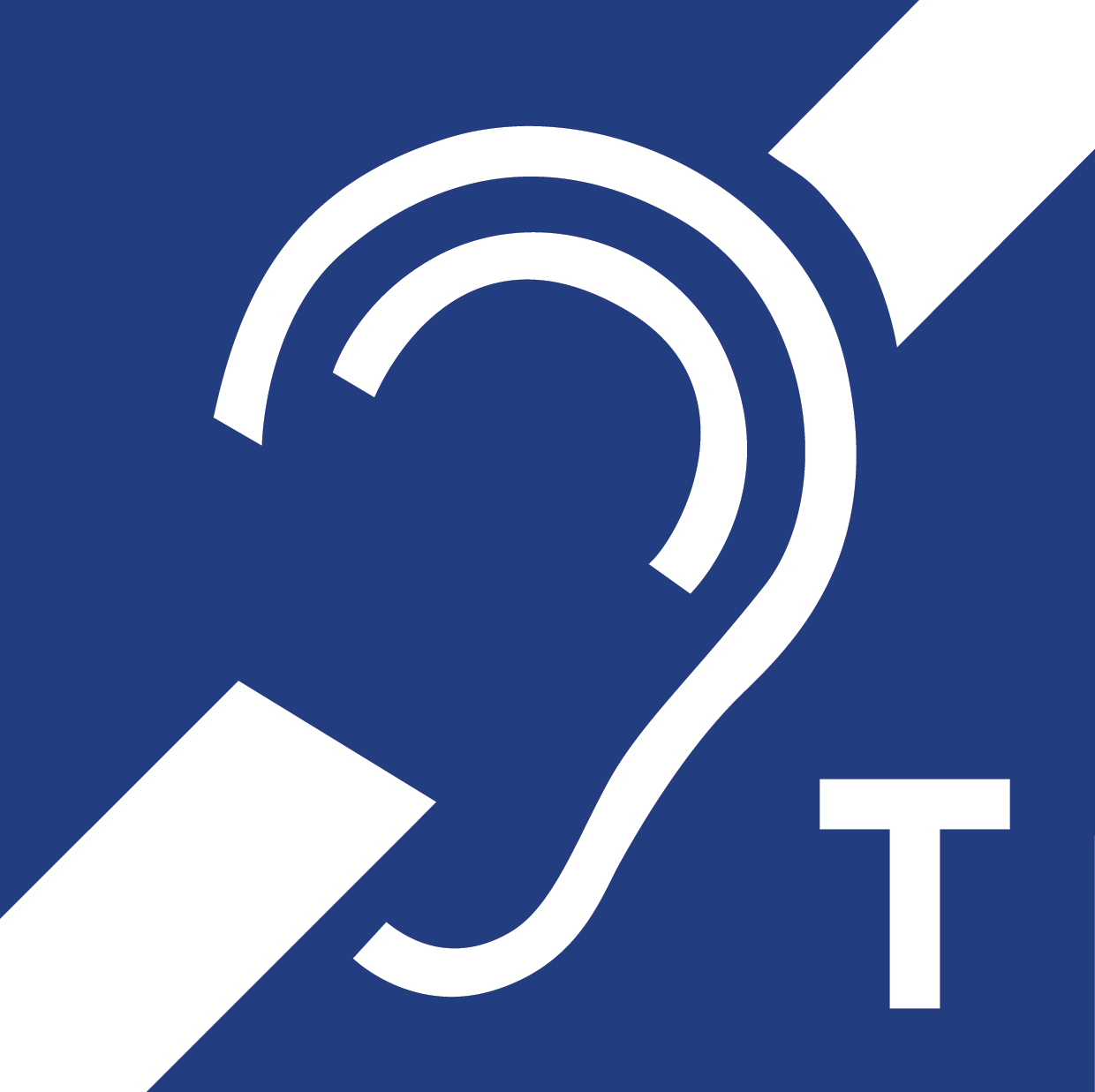Hearing Loops provide an important service for hearing aid users and others with challenging levels of hearing loss in many environments and applications; but they’re completely pointless if no none knows the facility is available to them.
It’s imperative that the necessary signage is displayed, as the systems are, in effect, invisible and inaudible to potential users – who simply wouldn’t know to switch their hearing aid to the correct setting, or ask for a receiver, without being informed to do so.

There is an internationally recognised Hearing Loop sign consisting of an ear graphic with a T and some brief instructions for those unfamiliar with the technology.
Signage requirements vary dependent on application, but the following is a good guide to what is both suitable and necessary:
Application |
Recommended Signage Requirement |
| Room area coverage system (theatre, waiting room, classroom, house of worship etc) | A sign or window sticker at average eye height to each entry point to the space (on a door is perfect), and at least one large sign at a visible point on a wall within the looped space.N.B. If the loop does not cover the entire area then a map of the coverage area should be at each entry point. |
| Open plan area coverage system (transport hub waiting benches | At least one high level sign that is visible from a distance, preferably with an indication of the area covered marked on the floor if possible. |
| Local area service point system (retail counter, service point, reception desk etc) | A sign displayed on the counter or as close as possible at a level that cannot be obscured by anyone standing at the service point. |
| Intercoms & automated audio assistance message systems (lifts/elevators, help/information points, ticket machines etc) | A small sign at a level where it is visible to the person pressing the ‘intercom’, ’information’ or ‘help’ button |
| Passenger Information Displays (Transport hubs, boarding platforms etc) | A sign located near the PID indicates that the loop service is available and should preferably be used in conjunction with an indication of the area covered marked on the floor if possible. |
| Platform waiting areas | If the platform area is covered it is recommend visible windows stickers or a large wall sign is displayed. If the platform is not covered then a painted sign on the floor and an indication of the area of coverage would suffice (Ampetronic can help with a template If required). |
| On-board transport carriages and cabs | A sign is required on the outside of the carriage or cab, particularly if the application is a train/tram where not all carriages offer the service, so that a hearing aid user would know what carriage to get on to.
Smaller signs should be visible from any seated area that is covered by the service (on the window would be most beneficial and simple). |
If you are unsure of your signage requirements then please contact Ampetronic for advice.
Ampetronic general format signage and window stickers can be found here


